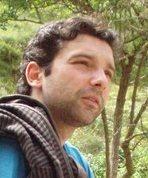SleepLab

In Portuguese:
Automatic Sleep Classification:Contribution using Itakura-Saito Distance and Wavelets, 2009-FCT
(Classificação automática do sono: Contribuição utilizando distância de Itakura-Saito e Wavelets)
Author: Eduardo Cardoso Supervisors:Arnaldo Batista Manuel Duarte Ortigueira
Abstract
The classification of sleep is typically done visually by specialists. Is a time-consuming process, expensive and subjective but very important to analyze the structure of sleep and diagnosing sleep disorders. This work intends to be a contribution to the automatic classification of sleep, based on a single electroencephalogram signal. Sleep depth was calculated using the Itakura-Saito spectral distance, and sleep spindles were detected by applying the Continuous Wavelet Transform. The problems relating to using a spectral distance between a template and the spectrum in question is discussed, as well as the calculation of the model itself.
The results show that calculating the sleep depth through the Itakura-Saito distance it’s possible to classify with great efficiency the awake, N2 and N3 state. Although REM and N1 states cannot be classify only based on Itakura-Saito distance, they do not overlap with none of the other states. The Wavelet Transform also proved very efficient in detecting sleep spindles however sometimes occur false positives and some spindles are excluded due to the demanding criteria that were applied. A user interface (SleepLab) where the procedures are intuitively organized has been implemented.
Keywords: Sleep Staging, Electroencephalogram, Itakura-Saito Distance, Sleep Spindles, Wavelet Transform.
PDF link: http://run.unl.pt/bitstream/10362/3955/1/Cardoso_2010.pdf
